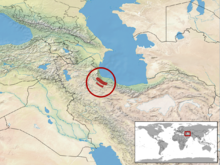
Macrovipera lebetinus is a venomous viper species found in North Africa, much of the Middle East, and as far east as Kashmir. Five subspecies are currently recognized, including the nominate race described here.

Atheris squamigera is a venomous viper species endemic to west and central Africa. No subspecies are currently recognized.

Vipera is a genus of venomous vipers. It has a very wide range, being found from North Africa to just within the Arctic Circle and from Great Britain to Pacific Asia. The Latin name vīpera is possibly derived from the Latin words vivus and pario, meaning "alive" and "bear" or "bring forth"; likely a reference to the fact that most vipers bear live young. Currently, 21 species are recognized.

Vipera ammodytes is a viper species found in southern Europe, mainly the Balkans, and parts of the Middle East. It is reputed to be the most dangerous of the European vipers due to its large size, long fangs and high venom toxicity. The specific name, ammodytes, is derived from the Greek words ammos, meaning "sand", and dutes, meaning "burrower" or "diver", despite its preference for rocky habitats. Five subspecies are currently recognized, including the nominate subspecies described here.
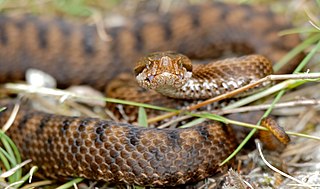
Vipera aspis is a venomous viper species found in southwestern Europe. Its common names include asp, asp viper, European asp, and aspic viper, among others. Bites from this species can be more severe than from the European adder, V. berus; not only can they be very painful, but also about 4% of all untreated bites are fatal. The specific epithet, aspis, is a Greek word that means "viper." Five subspecies are currently recognized, including the nominate subspecies described here.
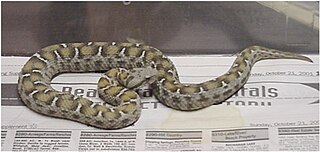
Montivipera albizona, the central Turkish mountain viper, is a venomous viper species endemic to the mountainous regions of central Turkey. No subspecies are currently recognized.
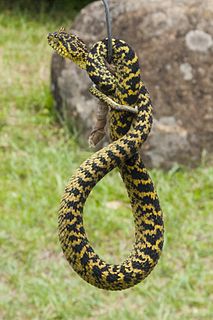
Atheris ceratophora is a venomous viper species endemic to a few mountain ranges in Tanzania. This used to be the only horned, arboreal viper known from Africa, until the discovery in 2011 of Atheris matildae, also found in Tanzania. No subspecies are currently recognized.

Echis carinatus sochureki is a venomous viper subspecies found in India, Pakistan, Afghanistan, Iran, and parts of the Arabian Peninsula.
Macrovipera lebetina transmediterranea is a venomous viper subspecies endemic to North Africa.
Vipera ammodytes meridionalis is a venomous viper subspecies endemic to Greece and Turkish Thrace.
Vipera ammodytes montandoni is a venomous viper subspecies endemic to Bulgaria and southern Romania.
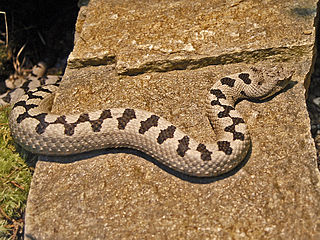
Vipera transcaucasiana is a venomous viper species endemic to parts of Georgia and northern Turkish Anatolia.
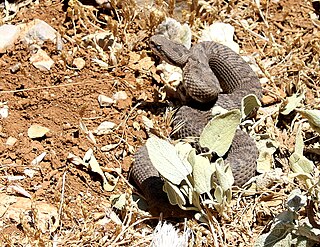
The Lebanon viper is a venomous viper species found in Lebanon, Jordan, Israel, and Syria. No subspecies are currently recognized.
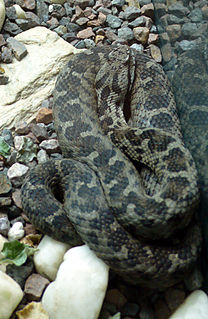
The Mount Bulgar viper is a venomous viper species endemic to the mountains of southern Turkey. No subspecies are currently recognized.
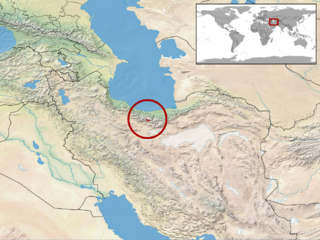
Montivipera latifii is a species of venomous snake in the subfamily Viperinae of the family Viperidae. The species is endemic to Iran. There are no subspecies that are recognized as being valid.

Montivipera raddei is a species of viper, a venomous snake in the subfamily Viperinae of the family Viperidae. The species is endemic to Armenia, Azerbaijan, Iran, Turkey, and possibly also Iraq. Two subspecies are recognized.

Vipera ursinii is a venomous viper and a very rare species, that is in danger of extinction. It is found in France, Italy, and Greece. Several subspecies are recognized.

Wagner's viper is a species of venomous snake in the subfamily Viperinae of the family Viperidae. The species is native to eastern Turkey and northwestern Iran. There are no subspecies that are recognized as being valid.

The Persian horned viper is a species of venomous vipers endemic to the Middle East and Asia.
